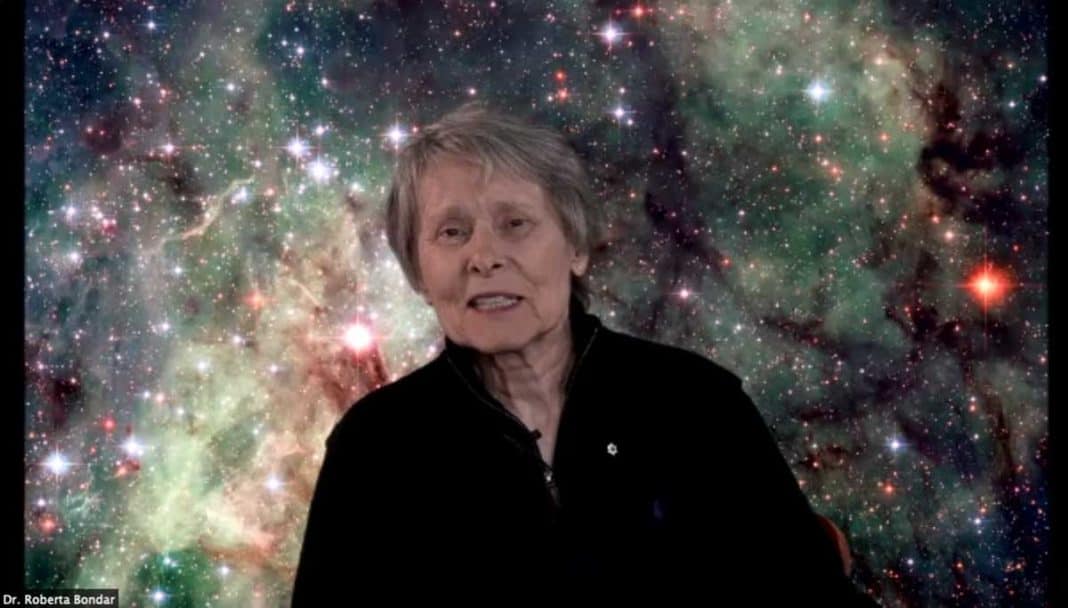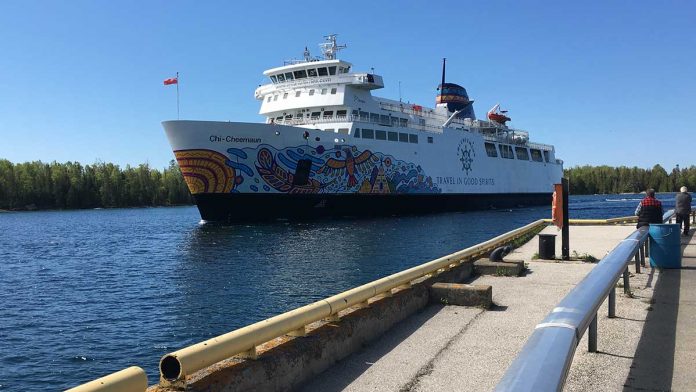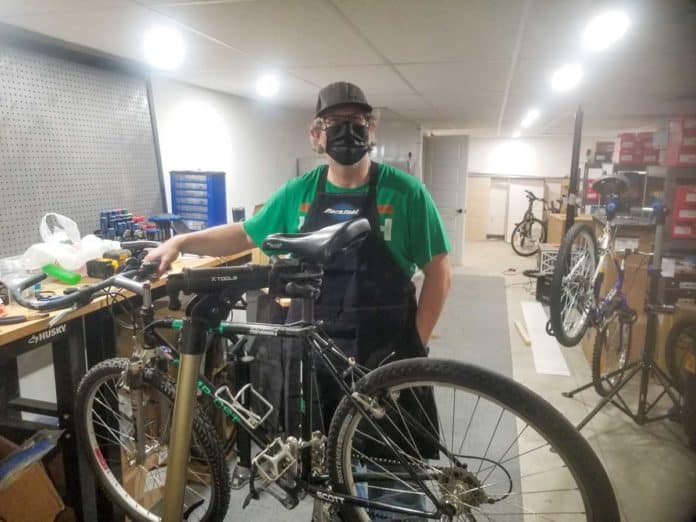SAULT STE. MARIE – Dr. Roberta Bondar, the second Canadian to visit space, gave a special, virtual presentation at last week’s Anishinabek Nation Migizii Doodem (Eagle Clan) Forum, describing her journey to becoming an astronaut and sharing perspectives from her life, especially the lessons she learned while soaring 400 kilometres above the Earth’s surface.
Her talk began with a 17-minute pre-recorded video Dr. Bondar made for the event.
Dr. Bondar’s video began with an explanation of her talk, which served to show people, especially youth, what careers they can pursue in science, technology, engineering and math (STEM) fields, and what they can do to reach their goals. She gave a special mention to the many students taking part in robotics programs at their schools and said those were great programs to foster a passion for science and a lifelong love of learning in young people.
“I like that the topic here (at Migizii Doodem) is ‘looking forward.’ Certainly, space flight gives us that grand opportunity to look forward,” Dr. Bondar began. “I always think about the fact that there are new ideas that are still out there to be tapped, things that we have yet to discover about the universe, about our planet, and about ourselves. And that makes life very, very exciting.”
Dr. Bondar, whose roots are in nearby Sault Ste. Marie, is a physician and scientist with her MD and degrees in zoology, agriculture, experimental pathology, neurobiology, neurology and neuro-ophthalmology. She is now a public speaker, photographer, author and environmental interpreter.
She said she first became engrossed in science as a child growing up and watching the night sky twinkle over Lake Superior. This sparked a desire to learn as much about the universe as possible, which led her to both formal and personal education and, ultimately, her enrollment in the Canadian astronaut program.
“I was really quite enchanted by looking at our planet. And I kind of understood that there was a role for science, a role for art, a role for understanding things like sound and things that I missed very much about Earth when I flew in space,” she said. “It made me want to connect better with the planet when I came back.”
The finite resources and biodiversity of the Earth captivated Dr. Bondar’s attention and she vowed to share those views with the world. Her medium of choice was photography.
Having no concept of ‘right-side up’ in space took some getting used to, especially when looking back at the blue marble with its continents pointed in any number of directions, but that also gave her new perspectives on the world, she said.
Her discussion focused on some of the technical advancements in the field, as well as future projects like Gateway, a space station outpost orbiting the moon that will serve as a base for missions farther afield.
“One thing for sure is that there’s all kinds of new technologies that have to be developed for this. They talk about all of these technologies that they know they have to have, but they’re all in the development stages,” Dr. Bondar said, emphasizing the future demands for innovation.
“Having curiosity drives that passion, and then we develop a plan to make it reality. We also understand that a diverse background in many things, whether it’s art, science or engineering, helps us to grow and become better human beings. It helps us to make our society better and stronger, and helps us to understand the value of sharing,” she concluded in her presentation.
From there, Mr. Henry hosted a question-and-answer session with the neurologist for 15 minutes. He first asked about her understanding that Earth is humanity’s sole provider, and whether she has had the opportunity to explore Indigenous knowledge and understanding in her work.
“Space flight did provide me an opportunity for seeing a much more united global view of the environment, that the term ‘Mother Earth,’ for me, certainly means something that it shouldn’t take going into space to understand. That’s where I think Indigenous communities really have the advantage,” she said, adding that Canada and Europe are just 20 minutes apart by spacecraft.
Dr. Bondar had the opportunity to work with Cree students many years ago and she took a particular interest in the pictographs along the shores of Lake Superior.
“It started me on a quest when I was younger to learn a bit more about traditional teachings,” she said.
Having diverse understandings of the world will also help to advance humanity’s efforts toward its future challenges, she said, especially in identifying possible challenges and solutions that someone may miss without having a certain lived experience.
For people thinking about pursuing interstellar careers, she said a successful astronaut is one who has a strong emotional, mental and physical skillset to work with others in a tight space and who finds creative ways to solve problems.
While the prospect of leaving the pull of gravity can be intimidating, Dr. Bondar said science helps humans deal with fear.
“My first thing I would say to a young person is ‘it’s not wrong to feel afraid, but it’s wrong if you don’t try to do something about it.’ You don’t walk away from something you’re afraid of, especially when you’re young, unless it’s life-threatening,” she said. “One has to engage sometimes in an unfamiliar situation in order to understand how to deal with it.”
An example she shared was that she is an introvert and hated competitions like public speaking in elementary school. To combat that, she took courses in school that would force her to present information and tell others about what she had learned.
For things that are important, Dr. Bondar said, humans can find a way to overcome the obstacles and improve themselves and the world.
Dr. Bondar is developing a podcast and will be speaking with Cree folk singer/songwriter Buffy Sainte-Marie about traditional medicines and Indigenous agriculture. Much of her current work involves photographing migratory birds and their habitats from above.





